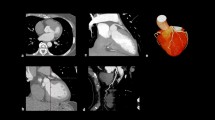Abstract
Background
Dobutamine myocardial perfusion perfusion imaging is being used increasingly for assessment of coronary artery disease. Heretofore, there have been no large series documenting its tolerance and safety. The aims of this study were to assess the tolerance, hemodynamic changes, and safety of dobutamine stress in conjunction with myocardial perfusion imaging.
Methods and Results
The tolerance, hemodynamic changes, and safety of dobutamine myocardial perfusion imaging were investigated in a consecutive series of 1012 patients. Dobutamine was infused at incremental doses of 10, 20, 30, and 40 μg/kg/min at 3-minute intervals. Perfusion tomography was performed according to standard protocols with either 201Tl or 99mTc-labeled sestamibi. Seven hundred twenty-nine patients (72%) reached a maximal dobutamine dose of 40 μg/kg/min. Dobutamine significantly increased heart rate (76±14 beats/min to 127±20 beats/min; p<0.001) and systolic blood pressure (141±20 mm Hg to 168±36 mm Hg; p<0.001) from baseline to peak infusion rate. The most common side effects were chest pain (31%), headache (14%), dyspnea (12%), palpitations (10%), and flushing (10%). There was no death, myocardial infarction, pulmonary edema, ventricular fibrillation, sustained ventricular tachycardia, or cerebral vascular accident. Nonsustained ventricular tachycardia occurred in 43 patients (4.2%) but did not cause any hemodynamic instability.
Conclusion
When done with the necessary caution, dobutamine myocardial perfusion imaging is a safe diagnostic test, although side effects are common.
Similar content being viewed by others
References
Hays JT, Mahmarian JJ, Cochran AJ, Verani MS. Dobutamine thallium-201 tomography for evaluating patients with suspected coronary artery disease unable to undergo exercise or vasodilator pharmacologic stress testing. J Am Coll Cardiol 1993;21:1583–90.
Marwick T, D'Hondt AM, Baudhuin T, Willemart B, Wijns W, Detry JM. Optimal use of dobutamine stress for the detection and evaluation of coronary artery disease: combination with echocardiography or scintigraphy, or both? J Am Coll Cardiol 1993;22: 159–67.
Vasu MA, O'Keefe DD, Kapellakis GZ, Vezeridis MP, Jacobs ML, Daggett WM. Myocardial oxygen consumption: effects of epinephrine, isoproterenol, dopamine, norepinephrine, and dobutamine. Am J Physiol 1978;235:H237–41.
Fung AY, Gallagher KP, Buda AJ. The physiologic basis of dobutamine as compared with dipyridamole stress interventions in the assessment of critical coronary stenosis. Circulation 1987;76: 943–51.
Meyer SL, Curry GC, Donsky MS, Twieg DB, Parkey RW, Willerson JT. Influence of dobutamine on hemodynamics and coronary blood flow in patients with and without coronary artery disease. Am J Cardiol 1976;38:103–8.
Mertes H, Sawada SG, Ryan T, Segan DS, Kovae R, Foltz J. Symptoms, adverse effects, and complications associated with dobutamine stress echocardiography: experience in 1118 patients. Circulation 1993;88:15–9.
Pellikka PA, Roger VL, Oh JK, Miller FA, Seward JB, Tajik J. Stress echocardiography, part II: dobutamine stress echocardiography: techniques, implementation, clinical applications, and correlations. Mayo Clin Proc 1995;70:16–27.
Picano E, Mathias W Jr, Pingitore A, Bigi R, Previtali M, Echo Dobutamine International Cooperative Study Group. Safety and tolerability of dobutamine-atropine stress echocardiography: a prospective, multicenter study. Lancet 1994;344:1190–2.
Poldermans D, Fioretti PM, Boersma E, Forster T, van Urk H, Cornel JH. Safety of dobutamine-atropine stress echocardiography in patients with suspected or proven coronary artery disease. Am J Cardiol 1994;73:456–9.
Mahmarian JJ, Boyce TM, Goldberg RK, Cocanougher MK, Roberts R, Verani MS. Quantitative exercise thallium-201 single photon emission computed tomography for the enhanced diagnosis of ischemic heart disease. J Am Coll Cardiol 1990;15:318–29.
Leppo JA. Dipyridamole myocardial perfusion imaging. J Nucl Med 1994;35:730–3.
Iskandrian AS. Adenosine myocardial perfusion imaging. J Nucl Med 1994;35:734–6.
Verani MS. Dobutamine myocardial perfusion imaging. J Nucl Med 1994;35:737–9.
Cerqueira MD, Verani MS, Schwaiger M, Heo J, Iskandrian AS, Investigators of the Multicenter Adenoscan Trials. Safety profile of adenosine stress perfusion imaging: results from the adenoscan multicenter trial registry. J Am Coll Cardiol 1994;23:384–9.
Lette J, Tatum JL, Fraser S, Miller DD, Watson DD, Heller G. Safety of dipyridamole testing in 73,806 patients: the multicenter dipyridamole safety study. J Nucl Cardiol 1995;2:3–17.
Ranhosky A, Kempthorne-Rawson J, Intravenous Dipyridamole Thallium Imaging Study Group. The safety of intravenous dipyridamole thallium myocardial perfusion imaging. Circulation 1990; 81:1205–9.
Nosration FJ, Froelicher VF. ST elevation during exercise testing. Am J Cardiol 1989;63:986–8.
Chahine RA, Raizner AE, Ishimori T. The clinical significance of exercise-induced ST-segment elevation. Circulation 1976;54:209–13.
Dunn RF, Bailey IK, Uren R, Kelly DT. Exercise-induced ST-segment elevation: correlation of thallium-201 myocardial perfusion scanning and coronary arteriography. Circulation 1980;61: 989–95.
Dunn RF, Freedman B, Kelly DT, Bailey IK, McLaughlin A. Exercise-induced ST-segment elevation in leads Vl or a VL: a predictor of anterior myocardial ischemia and left anterior descending coronary artery disease. Circulation 1981;63:1357–63.
Author information
Authors and Affiliations
Rights and permissions
About this article
Cite this article
Dakik, H.A., Vempathy, H. & Verani, M.S. Tolerance, hemodynamic changes, and safety of dobutamine stress perfusion imaging. J. Nucl. Cardiol. 3, 410–414 (1996). https://doi.org/10.1016/S1071-3581(96)90076-8
Received:
Accepted:
Issue Date:
DOI: https://doi.org/10.1016/S1071-3581(96)90076-8




